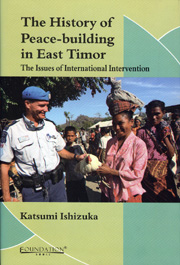Introduction
Published online by Cambridge University Press: 26 October 2011
Summary
East Timor and the theory of UN operations
East Timor (renamed Timor-Leste in 2002) is a tiny tropical state with the population of about one million, located in Southeast Asia, northwest of Australia. It was not until the 16th century that Portuguese and Dutch merchants started contacting Timor for sandalwood and spice trading. After the battle for influence over Timor between the two European states, the present border was created in 1906; West Timor was colonised by the Dutch, and East Timor by the Portuguese. Although East Timor was occupied by Japan from 1942 to 1945, Portugal resumed ruling East Timor following Japan's defeat in World War II.
The international community has paid a vast amount of attention to East Timor. This is partly because it is one of the newest members of the United Nations (UN). In retrospect, East Timor has received a variety of responses and assistance; military and economic, from the regional and international organisations. East Timor's case also indicates the lesson that inaction in the past might later require a huge intervention in resources from the international community. For example, in the 1970s, who would have expected that a tiny Portuguese colonial island in Southeast Asia, namely, East Timor, would receive one of the biggest UN assistances, including the financial cost of hundreds of million US dollars, thirty years later?
There are several reasons for East Timor's focus in the international affairs.
- Type
- Chapter
- Information
- The History of Peace-Building in East TimorThe Issues of International Intervention, pp. xv - xxivPublisher: Foundation BooksPrint publication year: 2010

